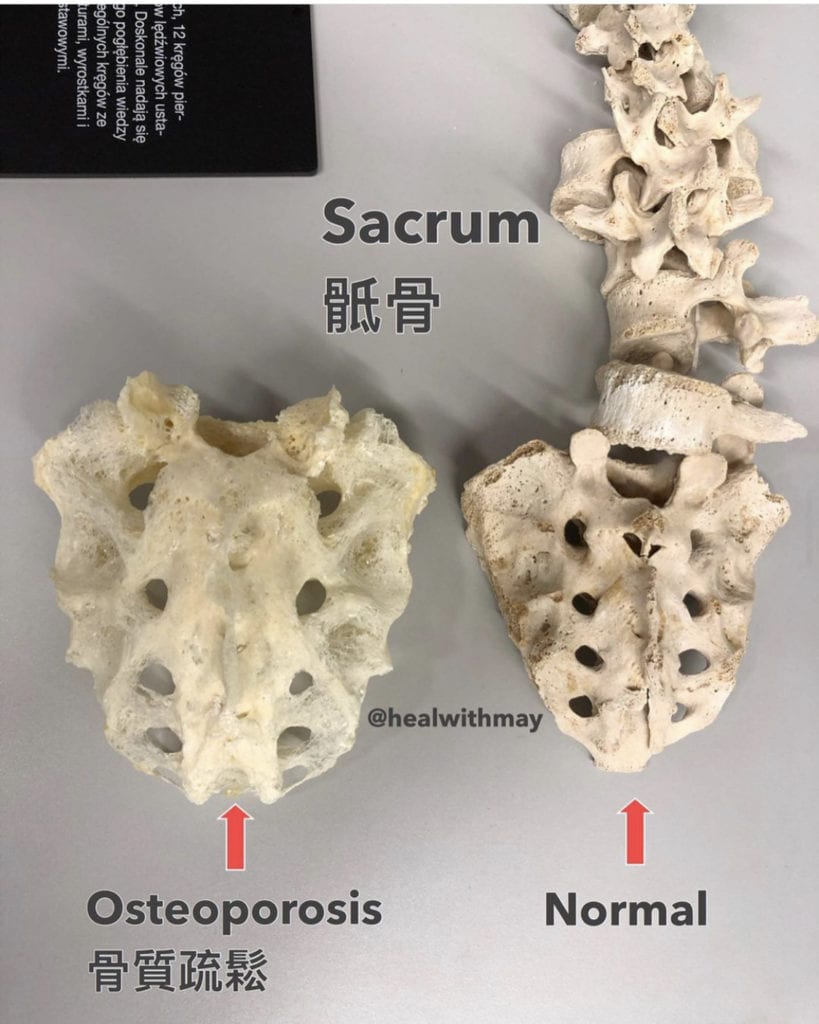
In honour of World Menopause Day today 18 October 2020, I want to write about the importance of bone health, osteoporosis and some top tips for maintaining your bone health for optimum aging. No matter where you are in your life now, I invite every woman to take steps to keep your bones strong and juicy, and yes even if you are in your early 30s! It’s never too early to start.
Moreover, there is a famous Taoist saying which states that “the strength of the spine is the strength of the organism.”
Hence, this ancient wisdom is reminding us to pay attention and take good care of spine and bone health for well-being and longevity.
Bone health and Menopause
Maybe menopause is not something you want to think about, but it is part of the natural order, just like puberty, giving birth, becoming a mother, all are’ integral’ parts of being a woman. Personally, I am either close to or at the perimenopause stage of my life. I hope you will join me to take a responsible and friendly approach to prepare our body, mind, and heart for this next phase of our journey as a woman, especially if you too at a similar stage of your womanhood.
Bone degeneration is real
Did you know those post-menopausal women can potentially lose 1/4 to 1/2 inches per decade after 40! Bone degeneration is closely related to menopause and today I want to share a bit more on bone degeneration. Yes, bone degeneration is real. Sharing here the bones I witnessed in the Plastinarium in Guben, Germany, where I was attending my cadaver dissection.

In the first picture, you are looking at a picture of our sacrum (a triangle bone on top of the tail bone) : a “normal” version vs an “osteoporosis” version. You can already see the difference in the density of the two bones.

In the second picture, you can see clearly the thinning of the bone density in the ‘sick’ sacrum. I actually held that sacrum in my own hands, it was feather-light and wafer-thin. It was fragile and delicate. Imagine what would happen when we fall if such fragile bones…. This was a real eye-opener for me and sometimes we really need to see it to believe it!
What is osteoporosis?
During your life, your body creates and absorbs bone tissues. It continues to reabsorb old bone and create new bone. Your entire skeleton is replaced about every 10 years although this process slows down as you get older. As long as your body has a good balance of new and old bones, you are bones stay healthy and strong. Bones loss occurs when more old bone is reabsorbed than new bone is created.
As a general rule, up until 20/30s years old, we gain bone mass but eventually, we begin to lose bone density as our body produces less bone tissues, and this is when osteopenia or osteoporosis kicks. With this condition, the bones become more brittle and likely to fracture (break) and its becomes more apparent as we grow older. Osteoporosis is a more common condition for women than men and especially women in perimenopause and menopause.
Why osteoporosis?
Below are some basic causes of why we lose bone mass.
❎ Fascia cells creating bone collagen (osteoblasts) decrease and/or fascia cells absorbing collagen (osteocasts) increase.
❎ lack of calcium , magnesium and baron (trace mineral) /Vitamin D3 and K2
❎ hormone deficiencies (low estrogen)
❎ super stress (high cortisol)
❎ lack of protein (amino acids- building blocks)
❎ part of aging process- growth hormones are decreasing
❎ lack of use /stress/exercise
In order for our bones to stay strong and healthy, they need to be stressed However, please note that the stress must be appropriate and not aggressive. Hence the goal is to keep a good balance between use and rest and not overdoing it or not putting any eustress at all! Adopting a regular practice to support your bone health can really make a difference because it will help to trigger the bone production in your body as the process slows down with age.
6 Top tips – bone health for optimum aging
- Keep moving! e.g. even just walking- is a great way to stress the bones in the legs, pelvis and spine. So Move it everyday! e.g. walk at least 30 mins a day.
- Keep your body warm (especially around the hips and feet especially during late autumn and winter months).
- Be friendly to your kidneys and avoid taking overly salty foods. According to Traditional Chinese Medicine, kidneys are responsible for our bone health, and salty foods are not kidney-friendly!
- Consume supplements (e.g. calcium, magnesium) wisely and as per advice of your medical professionals!
- Spiral movements for your spine. This helps to hydrate and restore the ‘coiling’ motions to our spine.
- Regular Yin Yoga. This is a huge one ladies! Yin Yoga is a highly effective way to promote bone health because its long-held passive poses allow the bones to be stressed longer triggering a larger recovery response, especially on our lumbar spine. Some suggested Yin Yoga poses for passive backbend targeting our lower back and sacrum (hold 3 mins, rest 1 min):
✅ sphinx pose

✅ supported bridge

✅ saddle pose (one of the most tricky Yin poses!)

Finally, less is more and always listen to the needs of your body and adjust your practice accordingly. I would love to hear if you have any tips to take care of your bones. I hope this helps to inspire you to take greater responsibility for your bone and spinal health.
M.x
p.s did you download your free 5 mins practice to release your foot and legs yet? Check it out here.
